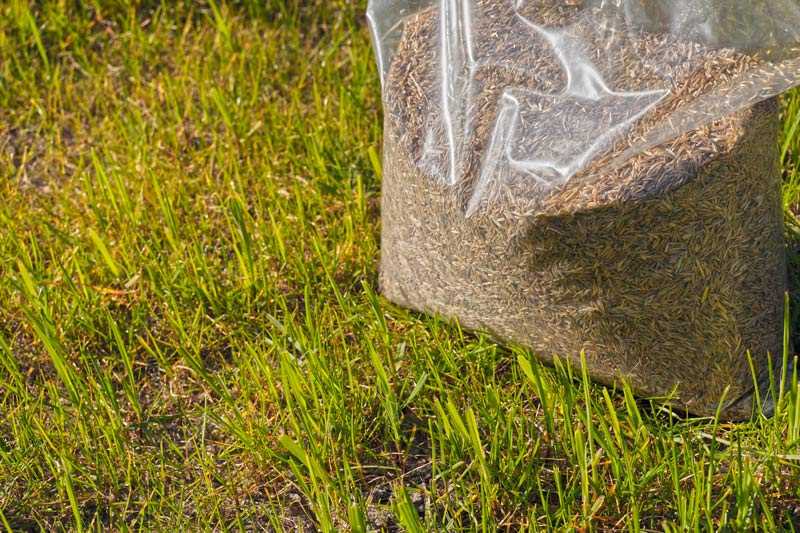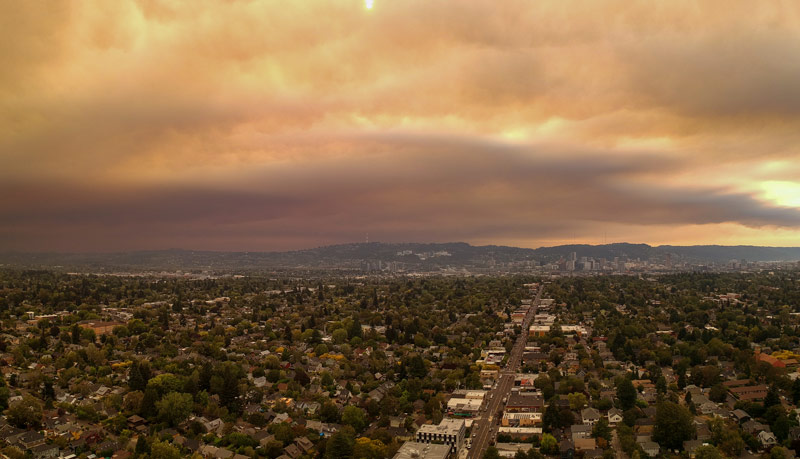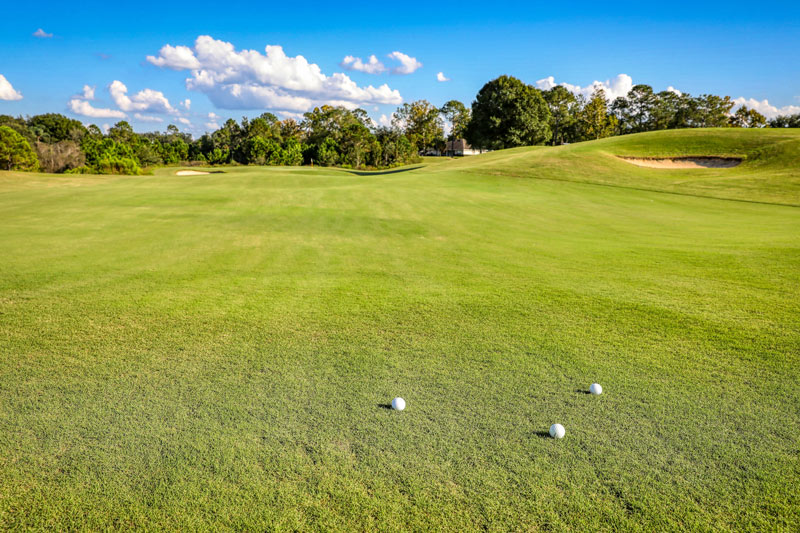
Photo by vladdon/Shutterstock
While the 2020 Seed Update was being prepared last spring, the United States was beginning to grapple with the reality of COVID-19 and what it might mean for nearly every facet of everyday life. At that time, the seed industry, like most businesses in the country, put into place what were thought to be temporary measures designed to protect the health and well-being of employees, suppliers and customers. Despite that early optimism, the pandemic is still with us a year later, and the temporary safety measures are still in place — and some of them may become permanent.
As if a global pandemic weren’t enough, over the past year, the turfgrass seed industry in the U.S. also endured other challenges that echo biblical plagues: pestilence (gray-tailed voles), wildfires and a near-apocalyptic ice storm. Despite these extreme challenges and some more mundane problems that were side effects of the pandemic, seed companies have actually prospered, achieving record sales. How has the past year played out, and what does the future hold for turf seed companies and their customers?
Plague No. 1: Voles
The gray-tailed vole is endemic to Oregon’s Willamette Valley, where it thrives on the area’s commercial turfgrass seed farms. This species has a 40-day breeding cycle (a female can be born and reproduce four to five offspring within 40 days) that repeats continuously over seven months, from May to December. The army of voles moves like mowers through the fields, chewing off one stem after another until most of the grass plants have been destroyed.
In 2020, one farmer reported to the Oregon Seed Council that one area that usually produces tall fescue seed at the rate of 2,000 pounds or more per acre delivered only about 300 pounds per acre. The only way to prevent the voles from coming back is to completely destroy the turfgrass field and replant in spring. As a result, turfgrass farmers lost millions of dollars in 2020.
Unfortunately, gray-tailed voles are particularly difficult to control — even extreme measures, such as removing 70% of their habitat, do not discourage them. The primary chemical control for the pest is zinc phosphide, but its use is restricted because it is harmful to the Canada geese that overwinter in Oregon seed fields. In recent years, the Oregon Department of Agriculture has extended the period when the zinc phosphide pellets can be applied so that farmers can start as early as mid-April (after the geese have left) and continue applications until Sept. 15.
Fortunately, vole populations are cyclic, and a year like 2020 is generally followed by about 10 years of gradually decreasing populations and significantly less damage to turfgrass fields until the next outbreak occurs. Although little research has been done on vole control, experience has shown that a devastating recurrence is inevitable. For this reason, and because of the wake-up call presented by the massive explosion of the vole population in 2020, the USDA National Wildlife Research Center has proposed a study on vole control, and the Oregon Seed Council and the three Oregon grass seed commissions have agreed to provide $71,500 in funding. Seed farmers have been urged to cooperate by allowing research to take place on their property if they are contacted by Oregon State University, the USDA or the Oregon Seed Council.
Plague No. 2: Wildfires
Devastating wildfires overwhelmed much of the western U.S. in the summer of 2020. In Oregon alone, more than a million acres were burned — more than in any year except for 2012 — and over 4,000 homes were destroyed. Two of the largest fires, the Lionshead fire and the Beachie Creek fire, were in the Willamette Valley, home of most of the state’s turfgrass seed farmers. Both started on Aug. 16 and merged on Sept. 8. The Lionshead fire (in Linn, Marion and Wasco counties) was not contained until Nov. 13, but the Beachie Creek fire (in Clackamas, Linn and Marion counties) was contained more than two weeks earlier, on Oct. 28.
Smoke was a health hazard to the farmers, some of whom were forced to delay overseeding the crops. The smoke also obscured sunlight, lowering soil temperatures and delaying seedling growth.

A view of downtown Portland, Ore., as wildfires raged in the region on Sept. 9, 2020. Photo by Tedder/Wikimedia Commons
Crystal Rose Fricker, president of Pure Seed, reports that some employees who lost homes in the fire still came to work, but at times seed packaging and cleaning warehouses at Pure Seed and other companies throughout the valley were forced to close because of poor air quality. DLF Pickseed completely shut down some of its facilities the week of Sept. 7, forcing customers to seek alternative seed sources during that time.
Plague No. 3: The ice storm
Wildlife and wildfires were not the only natural disasters the seed industry sustained. An arctic storm hit many parts of the U.S. in mid-February 2021, and it did not spare Oregon, which generally experiences a severe ice storm once every 20 to 25 years. The 2021 event, considered the worst in 40 years, extended south from Portland through the Willamette Valley and continued down to Eugene, about halfway down the western side of the state.
More than an inch of ice downed power lines, felled tens of thousands of trees, closed roads, and left more than 730,000 homes and businesses without power. Many people did not have heat, and those who rely on well water did not have water.
Fricker says Pure Seed headquarters in Canby, Ore., did not have power for 11 days, but some employees, many of whom had no electricity at home, bundled up and came to work to process seed orders. Southwest of Canby, the Corvallis area, which is home to DLF Pickseed USA, did not suffer quite as much, but residents and businesses there did endure six days without power, says Leah Brilman, Ph.D., the company’s director of product management and technical services.
At a time when seed companies were already struggling to keep pace with the high number of seed orders, the ice storm prevented some employees from coming to work, and the lack of internet connections and electrical power coupled with hazardous roads delayed processing and shipping of some orders. The good news was that the ice storm had no effect on 2020 seed yield.
The state of the turfgrass seed industry
Record sales of turfgrass seed have ensured a financially successful year at the same time that turfgrass seed companies in Oregon and elsewhere face increased challenges.
“We don’t have any perennial rye,” says Brilman at DLF Pickseed, noting low yields per acre this year and high sales on all products. DLF Pickseed stopped selling perennial ryegrass seed in October. Supplies are also short in Europe, and some are using intermediate ryegrass or turf-type annual ryegrass in perennial ryegrass’s place. Where perennial ryegrass is available, it is very expensive.
As of March 28, Brilman was unsure whether armyworms and excessive cold and lack of snow (in other words, moisture) in Minnesota and Canada had severely reduced crop yield. In addition, in Oregon, the fields for Chewings and red fescues could not be burned by the farmers, so their yields will be down this year.
All the companies that responded acknowledged the impact of the voles, wildfires and the ice storm but were still gratified by the high demand for grass seed even as they were stretched — “20/7, not 24/7,” as Fricker noted — to clean, process and distribute their product.

Photo by Mick Haupt/Unsplash
At Barenbrug, which recently acquired Jacklin Seed, officials also pointed out that the pandemic-related problems present in early 2020 remain, and processes are continually being modified to meet them. COVID-19 protocols and transportation of seed to national and international customers continue to be challenging.
As for the new cultivars, Fricker says the timing was difficult this year. Several factors determine whether a cultivar will be released, and sometimes time works against the seed company. The cultivar must be named, and the name must be approved by the federal government, and seed stock should be plentiful so customers will actually be able to buy the product. In 2021, several companies felt the best course was to sell the seed they had and wait another year to allow enough time for name approval to ensure availability of adequate seed supplies.
2021’s new turfgrass varieties
In the introduction to last year’s Seed Update, we assured readers, based on comments from leaders in the turfgrass seed industry, that in 2021, the turfgrass seed companies expected to release a larger number of new varieties of ryegrasses, tall fescues and possibly fine fescues. Kentucky bluegrasses and fine fescues were also expected in the next few years.
Of course, no one, not even those who had been in the industry for many years, could have imagined the good, the bad and the ugly that would be 2020 and its effects on 2021. As a result, this year’s Seed Update has only 20 varieties, exactly three more than the 2020 Seed Update, including one intermediate ryegrass and two fine fescues. Tall fescues, however, do dominate the entries, with 10 cultivars, seven of which are from Mountain View Seeds. There are also two entries for Kentucky bluegrasses, both of which are from Landmark Turf & Native Seed and were in the 2018 National Turfgrass Evaluation Program trial (data from that trial are not ready for publication but can be seen on the NTEP website).
The turfgrasses in the Seed Update are listed in alphabetical order by their English species name, and varieties are listed alphabetically within a species. In a few cases, the experimental name or number is included in parentheses after the cultivar name, which may make it easier to locate NTEP trial results. The information supplied here is provided by the seed companies that produce and sell the product. For more information, please contact the companies or the research programs listed in “Contributors to GCM’s 2021 Seed Update,” below.
Editor’s note: Barenbrug USA, DLF Pickseed, the National Turfgrass Evaluation Program, the Oregon Seed Council and Pure Seed provided information for this article.
New turfgrass varieties, 2021
Chewings fescue
Leeward, DLF Pickseed USA
• Limited availability now; full availability fall 2021
• Excellent turf quality
• High resistance to Microdochium patch, leaf spot, dollar spot, red thread and summer patch
• Superior traffic tolerance
• High resistance to heat and shade
• Superior performance at all mowing heights, from fairways to no-mow
• 2014 NTEP
Creeping bentgrass
007XL, Seed Research of Oregon/DLF Pickseed USA
• Limited quantities now; higher quantities fall 2021
• No. 1 bentgrass variety for overall turf quality ratings over a four-year period at Rutgers University
• Excellent dollar spot and anthracnose resistance
• Early spring green-up and excellent wear tolerance
• Moderate green leaf color; fine leaf texture; high turf density
• Tolerates low mowing height down to .105 inch (2.67 millimeters)
• 2020 NTEP, fall planting; Rutgers
Kingdom, Barenbrug USA
• Seed available now
• Dark green color
• Fine leaf texture
• Early spring green-up
• Anthracnose, dollar spot, brown patch, fairy ring and pink snow mold resistance
• Competitive against annual bluegrass
• 2014 NTEP
Matchplay, Landmark Turf & Native Seed
• Next-generation heat tolerance and disease resistance
• Medium dark green color
• Optimum density without puffiness and specialty maintenance
• Quick divot and ball mark recovery
• Extensive genetic diversity
• Early spring activity and green-up
Oakley, Mountain View Seeds
• Good supplies expected fall 2021/spring 2022
• Highest turf quality
• Excellent disease resistance
• Superior wear tolerance
• Use on tees, greens and fairways
• 2020 NTEP; Rutgers
Piper, Mountain View Seeds
• Good supplies expected fall 2021/spring 2022
• Highest turf quality
• Excellent disease resistance
• Superior wear tolerance
• Use on tees, greens and fairways
• 2020 NTEP; Rutgers
Creeping red fescue
Simmons, Vista Seed Partners
• Available now in limited quantities
• Strong creeping red fescue with impressive spreading ability
• Excellent heat tolerance
• Excellent overall disease resistance
• Developed at Rutgers University with Peak Plant Genetics
Intermediate ryegrass
Remedy, DLF Pickseed USA
• Available now
• Superior overseeding performance
• Excellent low-temperature germination
• Fine leaf texture; darker green color
• Germinates faster than perennial ryegrass, particularly in cooler conditions
• Bred to disappear smoothly and quickly in the late spring as bermudagrass is ready to grow
• 2012, 2013 and 2016 University of Arizona overseeding trials
Kentucky bluegrass
United, Landmark Turf & Native Seed
• Available now
• Medium-fine texture
• Medium dark green color
• Heat-, traffic- and drought-tolerant
• Low-mow; low-input
• Resistance to summer patch, crown rust and dollar spot
• 2018 NTEP
Yellowstone, Landmark Turf & Native Seed
• Available now
• Medium dark green color
• Medium leaf texture
• Improved winter color
• Traffic-tolerant
• Improved resistance to pink snow mold, crown rust and dollar spot
• 2018 NTEP
Tall fescue
Avenger III (PPG-TF 308), Mountain View Seeds
• Good supplies expected fall 2021/spring 2022
• Good brown patch resistance
• Resistant to drought stress
• High quality in cold climates
• Dark green fall color
• 2018 NTEP
Dynamite G-LS (PPG-TF 254), Mountain View Seeds
• Good supplies expected fall 2021/spring 2022
• Great seedling vigor
• Quickest tillering
• NTEP shade winner
• Highest quality in fall
• 2018 NTEP
Firecracker G-LS (PPG-TF 308), Mountain View Seeds
• Good supplies expected fall 2021/spring 2022
• Gray leaf spot resistant
• Lateral Spread (LS) technology
• Dense, compact growth
• Tops in NTEP quality scores
• 2018 NTEP
Raceway, Seed Research of Oregon/DLF Pickseed USA
• Available fall 2021
• Excellent turf quality
• Superior gray leaf spot resistance; high resistance to Pythium and brown patch
• Good wear, shade and drought tolerance
• Rapid establishment
• Dark green color
• 2018 NTEP; Rutgers
Raptor LS (PPG-TF 336), Mountain View Seeds
• Good supplies expected fall 2021/spring 2022
• Dark green color
• Aggressive establishment
• Elite NTEP performance
• High wear tolerance
• 2019 NTEP
Spyder 2LS (ZRC-1), Mountain View Seeds
• Good supplies expected fall 2021/spring 2022
• Second-generation version
• High NTEP quality scores
• Good lateral spread
• Very fine leaf texture
• 2018 NTEP
Stealth (PPG-TF 238), Mountain View Seeds
• Good supplies expected fall 2021/spring 2022
• High Northeast NTEP scores
• Low-mow ability
• Strong year-round cover ratings
• Quickest establishment
• 2018 NTEP
Titanium G-LS (PPG-TF 255), Mountain View Seeds
• Good supplies expected fall 2021/spring 2022
• Highest NTEP turf quality across all regions
• Dense and compact
• Excellent genetic color
• Exceptional gray leaf spot and Pythium resistance
• 2018 NTEP
Xanadu, Barenbrug USA
• Available fall 2021
• Medium to dark green color
• Fine leaf texture
• Traffic, shade and drought tolerance
• Brown patch and Pythium blight resistance
• 2018 NTEP; 2018 New Jersey turf trials
Zion, Barenbrug USA
• Available later this year
• Fine leaf texture
• Medium green color
• Early spring green-up
• Traffic, shade and drought tolerance
• Gray leaf spot resistance
• 2018 NTEP
Contributors to GCM’s 2021 Seed Update
Barenbrug USA
Contact: Alyssa Cain
541-335-9510
33477 Highway 99E
Tangent, OR 97389
Twitter: @BarenbrugUSA
DLF Pickseed USA/Seed Research of Oregon
Contact: Sean Chaney
541-409-7201
Twitter: @DLFPickseed; @SROgerminati
Jacklin Seed
Contact: Margaret Childers
509-319-3174
23403 E. Mission #222
Liberty Lake, WA 99019
Twitter: @BarenbrugUSA
Landmark Turf & Native Seed
509-835-4967
800-268-0180 (toll-free)
509-835-4969 (fax)
P.O. Box 19250
Spokane, WA 99224
Twitter: @Landmarkseed
Mountain View Seeds
Contact: Duane Klundt
503-588-7333
8955 Sunnyview Road NE
Salem, OR 97305
Twitter: @MtnView_Seeds
Vista Seed Partners
Contact: Christie McDowell
541-491-1019
P.O. Box 30
Shedd, OR 97377
Research resources
National Turfgrass Evaluation Program (NTEP)
Kevin Morris, executive director
301-504-5125
301-504-5167 (fax)
10300 Baltimore Ave., Bldg. 005, Room 307
Beltsville, MD 20705
University of Arizona
David Kopec, Ph.D., turfgrass extension specialist (retired)
Maricopa County Cooperative Extension
4341 E. Broadway Road
Phoenix, AZ 85040
Rutgers University
Stacey Bonos, Ph.D., director of the Turfgrass Breeding Project
848-932-6367
59 Dudley Road
Foran Hall, Room 239
New Brunswick, NJ 08901
Teresa Carson is a freelance writer and editor who served as GCM’s senior science editor for nearly 22 years prior to her retirement at the end of 2020.